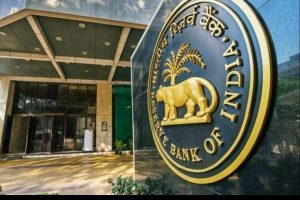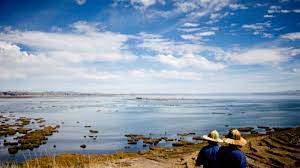Today’s Current Affairs: 18th aug 2023 for UPSC IAS exams, State PSC exams, SSC CGL, State SSC, RRB, Railways, Banking Exam & IBPS, etc
Table of Contents
Pong Dam : Release Of a Substantial Amount Of Water

Several villages within the Beas River catchment area in Punjab have been submerged following the release of a substantial amount of water from the Pong Dam.
- Pong Dam also known as the Beas Dam, is an earth-fill embankment dam on the Beas River in the state of Himachal Pradesh.
- The purpose of the dam is water storage for irrigation and hydroelectric power generation.
- The construction of the dam began in the year 1961 and was completed in 1974 and at that time was known as the tallest of its type in the country.
- The raised water level thus invariably created an artificial lake called the Maharana Pratap Sagar, after the great ruler of Mewar. The lake became a renowned bird sanctuary for birds of numerous species including Bar-headed Goose and the Red-necked Grebe.
- The Pong Dam is a 133 m tall and 1,951 m long earth-fill embankment dam with a gravel shell.
- The dam is 13.72 m wide at its crest, which sits at an elevation of about 435.86 m above sea level.
- The base of the Pong Dam is about 610 m wide and has a total volume of 35,500,000 metre cube.
Technology Development Fund (TDF) Scheme:

The Minister of State in the Defence Ministry recently said the Technology Development Fund (TDF) Scheme has so far supported 41 MSMEs and 20 startups.
- Technology Development Fund (TDF) Scheme has been established to promote self-reliance in defense technology as a part of the ‘Make in India’ initiative.
- It is a programme of MoD (Ministry of Defence) executed by the Defence Research and Development Organisation (DRDO) meeting the requirements of Tri-Services, Defence Production and DRDO.
- The scheme encourages participation of public/private industries especially MSMEs to create an ecosystem for enhancing cutting edge technology capability for defence application.
- It supports indigenous development of components, products, systems and technologies by MSMEs and start-ups.
- Eligibility:
- MSMEs and Startups registered in India.
- Public limited company, private limited company, partnership firms, limited liability partnership, one-person company, sole proprietorship registered as per applicable Indian laws.
- The industry has to be owned and controlled by an Indian citizen.
- Industries with foreign investments of 49% or less.
- Funding Support:
- The funding will be through provision of grants to the Industry.
- The project cost of up to INR 10 Cr will be considered for funding, subject to a maximum of 90% of the total project cost.
- Industry may work in collaboration with academia or research institutions.
- The work involvement of academia cannot exceed 40% of the total project cost.
- The funding will be linked to mutually agreed milestones
PM-eBus Sewa Scheme:

The union cabinet recently approved the ‘PM-eBus Sewa’ scheme for augmenting city bus operations.
- Under the PM-eBus Sewa Scheme, 10,000 e-buses will be deployed across cities in the country.
- Under this scheme, city bus operations will be done on a Public Private Partnership (PPP) model.
- This scheme will support bus operations for 10 years.
- States/Cities shall be responsible for running the bus services and making payments to the bus operators.
- The Central Government will support these bus operations by providing subsidy to the extent specified in the proposed scheme.
- It has been allocated a total funding of Rs 57,613 crore.
- Out of this financial provision, the central government will contribute Rs 20,000 crore, while the remaining portion will be covered by the state governments.
- The scheme will cover cities with 3 lakhs and above population and priority will be given to cities not having organised bus services.
- There are two segments of the scheme: Augmenting the city bus services and Green Urban Mobility initiatives.
Centralized Public Grievance Redressal And Monitoring System:

The Department of Administrative Reforms and Public Grievances (DARPG) released the Centralized Public Grievance Redressal and Monitoring System (CPGRAMS) 12th monthly report for States for July, 2023.
- DARPG has integrated the AI based language tool, Bhashini with the CPGRAMS portal.
- This integration would facilitate the Grievance Redressal Officers (GROs) to translate the regional language grievance texts into English.
- The complainants will have the option to view the final reply in both English and the translated native language, ensuring better understanding and communication between the citizen and the concerned authorities.
- Centralised Public Grievance Redress and Monitoring System (CPGRAMS) is an online platform available to the citizens 24×7 to lodge their grievances to the public authorities on any subject related to service delivery.
- It is a single portal connected to all the Ministries/Departments of Government of India and States.
- Every Ministry and States have role-based access to this system.
- CPGRAMS is also accessible to the citizens through standalone mobile application downloadable through Google Play store and mobile application integrated with UMANG.
- The status of the grievance filed in CPGRAMS can be tracked with the unique registration ID provided at the time of registration of the complainant.
- CPGRAMS also provides an appeal facility to the citizens if they are not satisfied with the resolution by the Grievance Officer.
Decisions Of Monetary Policy Committee:

The Monetary Policy Committee (MPC) of the Reserve Bank of India (RBI) has recently opted to maintain the policy repo rate at 6.5%, while simultaneously revising its projection for retail inflation in the current fiscal year (2023-24).
- Additionally, a temporary 10% Incremental Cash Reserve Ratio (I-CRR) is imposed on banks to absorb excess liquidity.
- Repo Rate Unchanged: The RBI decided unanimously to keep the policy repo rate unchanged at 6.5% to balance economic growth and inflation control.
- Inflation Projection Increased: The projection for retail inflation in the current fiscal year has been raised by 30 basis points to 5.4%.
- This adjustment acknowledges the upward trend in headline inflation, driven in part by rising vegetable prices.
- While the spike in vegetable prices is expected to be temporary, external factors like possible El Nino weather conditions and global food prices pose potential risks.
- Projected GDP Growth: The MPC retained its projection for real GDP growth in 2023-24 at 6.5%.
- Incremental Cash Reserve Ratio (I-CRR): Effective from 12th August 2023, scheduled banks are required to maintain an I-CRR of 10% on the net increase in their demand and time liabilities between May 19, 2023, and July 28, 2023.
- This move aims to absorb surplus liquidity, particularly due to the recent demonetisation of Rs. 2000 notes.
- The RBI opted for I-CRR over a general CRR increase to prevent penalizing banks for their current deposits and to limit impacts on credit growth and the economy.
- A CRR rise would have restricted loan funds and raised borrowing costs. I-CRR only targets excess liquidity from demonetization without disrupting regular banking operations.
- The existing CRR remains unchanged at 4.5%.
Lake Titicaca : Threat From Climate Change

Lake Titicaca is facing a serious threat from climate change and drought.
- It is the largest freshwater lake in South America and the highest of the world’s largest lakes.
- The lake, which lies on the border between Bolivia and Peru, has seen its water levels drop to near-record lows.
- The lack of rainfall and the increased evaporation due to rising temperatures have reduced the inflow and volume of the lake.
- This has resulted in stranded boats, exposed shorelines, and diminished fish populations.
- The lake is also home to more than 500 species of plants and animals, some of which are endemic and endangered.
Nutrition And TB Linkage : Lancet Study

New studies published in The Lancet and The Lancet Global Health journals provide evidence that improved nutrition can significantly reduce tuberculosis (TB) incidence and mortality in India.
- The Reducing Activation of Tuberculosis by Improvement of Nutritional Status (RATIONS) trial conducted in Jharkhand (the state has a high TB burden) revealed:
- Better nutrition among patients with lung TB can lead to a 40% reduction in all forms of TB and a nearly 50% reduction in infectious TB
- Underweight TB patients who experience early weight gain can have their risk of mortality reduced by 60%.
- Nearly 30 households would need to be provided nutritional supplementation to prevent one case of TB
- The trials’ findings are particularly significant as undernutrition has emerged as a leading risk factor for TB worldwide.
- These results could have policy implications and contribute to India’s goal of eliminating TB by 2025
- Tuberculosis (TB) is an infectious disease caused by the bacterium Mycobacterium tuberculosis. It primarily affects the lungs but can also affect other parts of the body.
- As per the WHO Global TB Report 2022: India’s TB incidence for the year 2021 is 210 per 100,000 population (a decline of over 18% from 2020)
- India has a large burden of the world’s TB, with an estimated economic cost of US$100 million lost annually due to this disease.
- As per the WHO Global TB Report 2022, TB cases are attributable to five risk factors — undernourishment, HIV infection, alcohol use disorders, smoking and diabetes.
Koosina Mane Initiative : Karnataka Government

Karnataka government has introduced the ‘Koosina Mane’ initiative, which aims to provide childcare support for women enrolled under the Mahatma Gandhi National Rural Employment Guarantee Act (MGNREGA) and other working mothers.
- This initiative aims to establish childcare centers across 4,000 gram panchayats, supporting working mothers under the MGNREGA and others nearby.
- It addresses the “triple burden” women face by redistributing childcare responsibilities, potentially enabling sustained employment and upskilling.
- It will address the issue of the ‘motherhood penalty,’ which is considered to be one of the reasons why women drop out of the labor force.
- Significance of the scheme:
- Boosting Women’s Labor Force Participation
- Acknowledging Working Mothers Redistribution of Childcare Burden from women, enhancing their ability to engage in better paying and more sustainable work.
- Addressing Child Safety by providing a well-managed childcare infrastructure with trained caregivers.
- Enabling Maternity Protection.
- Fostering Women’s Employment
Redwoods Rising : Conservation Initiative

A conservation initiative known as Redwoods Rising aims to restore California’s damaged redwood forests by mimicking the traits of healthy young forests, using methods like thinning and prescribed fires.
- The project, carried out by Redwood National and State Parks and the Save the Redwoods League, seeks to combat the impacts of unchecked logging and address the challenges posed by climate change.
- Redwoods, known for their ability to store carbon, face increasing threats from rising temperatures and wildfires.
- Sequoioideae, commonly referred to as redwoods, is a subfamily of coniferous trees. It includes the largest and tallest trees in the world.
- These trees can live for thousands of years.
Global Summit On Traditional Medicine:

The World Health Organization (WHO), in collaboration with the Ministry of Ayush, is organizing a unique global summit on Traditional Medicine.
- This unprecedented event will bring together experts, practitioners, and dignitaries to explore the latest scientific advancements and evidence-based knowledge in the field of traditional medicine.
- This summit highlights the strides India has made in blending traditional practices with contemporary approaches, ultimately showing a path toward achieving universal health coverage through traditional medicine system
- The summit will also feature an exhibition showcasing traditional medicine systems from around the world, including the Ministry of Ayush’s contributions.
- This exhibition will spotlight the relationship between Traditional Medicine and the natural environment and demonstrate scientific and technological advancements led by various WHO regional centres and the Ministry of Ayush.
- The summit signifies a significant step in the realm of traditional medicine, especially following the establishment of the WHO Global Centre for Traditional Medicine in 2022 with the support of the Indian Government.
- This collaborative initiative will play a pivotal role in shaping global health policies related to traditional medicine research, practices, and public health.




